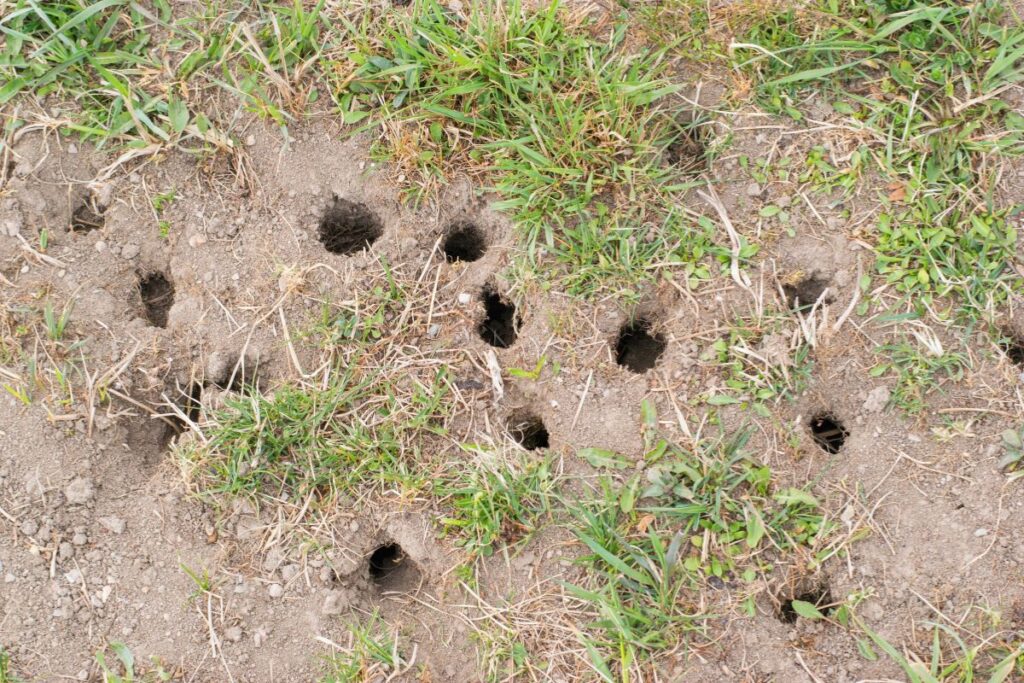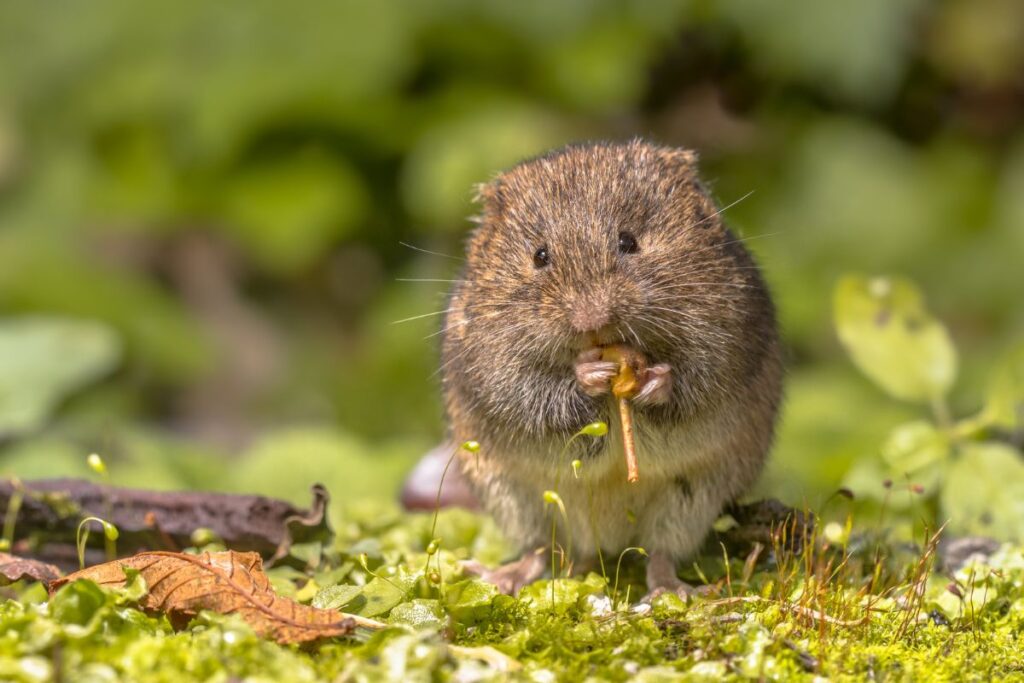Tired of voles ruining your lawn and garden?
There are natural ways to handle it! In this article, we’ll share 8 effective methods to get rid of those pesky critters without using harsh chemicals.
Ready to reclaim your yard?
Let’s get started!
Signs Of Voles In The Garden

Finding voles in your garden can be tricky because they spend most of their time underground. Despite this, there are several indicators of their presence.
Plants that show evidence of nibbling: Look out for partially-eaten root vegetables and flower bulbs. Carrots and greens can also go missing.
Surface tunnels: Voles create winding tunnels close to the soil’s surface in lawns and gardens.
Chew marks on bark: Check around the bases of trees and shrubs for chew marks. This is especially noticeable in spring when voles become more active and their tunnels are easier to spot.
Favored plants: Voles enjoy munching on flowers like dahlias, crocuses, and tulips. They’ll also nibble on other garden plants, especially root veggies and turf grass.
Moles Vs Voles
Telling moles and voles apart can be challenging because they look similar and cause almost identical damage.
Diet differences: Moles are carnivores, consuming insects, larvae, and worms. Voles, on the other hand, are omnivorous and eat roots and leaves.
Appearance: Voles have dark gray-brown fur, round ears, and tails that resemble field mice. Moles are slightly larger, with distinct front paws and pink snouts that look like sea anemones.
Tunnel characteristics: Moles create larger tunnels and leave behind volcano-shaped mounds of soil when digging. Vole tunnels are closer to the surface and don’t have soil mounds.
Tips to Keep Voles Away

1. Start with Barriers
If you’re growing plants in containers, voles are less of a problem. For gardens in the ground, fences around garden beds are essential. These fences should be buried 6 to 10 inches deep to prevent voles from tunneling underneath. Protect your trees and flowers using tree guards or bulb cages placed just below the soil surface to prevent access.
2. Plant Companion Crops
Using companion planting can help repel voles. Planting garlic and other Alliums near your crops introduces scents that voles dislike. Catmint is another great option to add as a natural deterrent.
3. Keep Your Yard Clean and Tidy
A well-maintained yard is key to repelling pests like voles. Regularly trim shrubs, weed your garden, clean brush piles, and rake up leaves and twigs. Additionally, be sure to rake mulch away from tree bases to stop voles from using it for burrows.
4. Opt for Container Growing
Consider growing your vegetables in pots and containers, as this keeps voles from reaching them. If you have a larger area to use, raised garden beds with hardware cloth at the base can prevent voles from digging up from below.
5. Use Repellent Spray
Repellent sprays, whether homemade or store-bought, can be effective but need frequent reapplication, especially after rain. These sprays often contain ingredients like castor oil, hot peppers, or predator urine and are easy to use around the garden.
6. Grow Plants That Voles Avoid
Certain plants are naturally disliked by voles. To keep them away, grow plants like hellebores, salvias, mint, daffodils, fritillaria, and grape hyacinth. These plants will help create a less inviting environment for voles.
7. Set Live Traps
If you go with live traps, consistency is key. Place traps near the base of trees where voles nest or perpendicular to their tunnels. Use peanut butter as bait and check the traps regularly, releasing any captured voles far from populated areas.
8. Attract Natural Predators
Attracting natural predators such as hawks and owls can help control the vole population. Create a bird-friendly environment by providing water features or installing bird feeders to entice these natural hunters into your garden.

